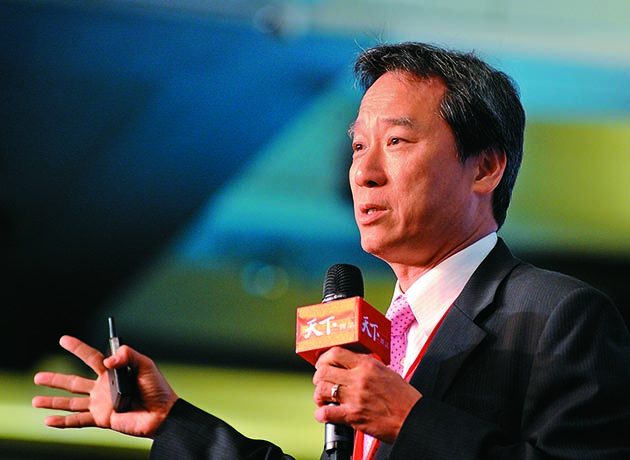Corporate Succession
The New CEO: Breeding the Rare Bear

Source:Ming-Tang Huang
What kind of organizational inertia can cause a bumpy corporate succession? Management professor Lee Ji-Ren shares the four keys to a seamless leadership transition.
Views
The New CEO: Breeding the Rare Bear
By Yunfang TaoFrom CommonWealth Magazine (vol. 492 )
Talent development is the key to corporate growth. Two statements by Peter Drucker, the father of modern management, struck me as quite profound. He said that the quality and performance of a company's managers are the sole competitive advantage it can count on. He also said an executives' core duty is to cultivate the next generation of managers.
The book Built to Last: Successful Habits of Visionary Companies (by James Collins and Jerry Porras) found that in exceptional, long-lasting corporations, the chief executives tend to move up the ranks within the company. Companies should rely on internally generated strength for growth, and the quality and quantity of a company's managers decides its speed of growth.
The need for corporate succession in Taiwan is becoming increasingly apparent. According to a CommonWealth Magazine survey, the top 100 Taiwanese manufacturing enterprises have been in business an average of 32 years. Nearly half of them are still run by the company founder. For top-rated companies it is definitely imperative to build an effective succession plan.
Passing on the baton does not mean looking for "a successor" for the founder, but finding a "leadership lineup" for the company. Taiwan's current corporate succession problem has much to do with the course of past corporate growth. Organizational inertia has various downsides that need to be changed to enable company growth:
First, there is an overemphasis within the division of labor on specialists at the expense of generalists. A McKinsey management consultant once called management generalists a scarce human resource in Taiwanese companies, describing them as "even rarer than the Formosan black bear" (an endangered species).
While a generalist is not necessarily a Renaissance man, he or she is definitely not a specialist. Since Taiwanese companies are specialist-oriented, they tend toward a business unit-based organizational structure, which makes rotating personnel difficult and restricts the corporate environment for cultivating generalists. Furthermore, the stock bonus system causes management structures to become simpler, so that companies end up with "one kind of management, different interpretations."
Second, there's an overemphasis on cost efficiency. What we see most often is an employee utilization philosophy that builds on an "n minus 1" equation, which means if a job can be done by nine persons, you won't use ten, and workers will have to juggle more than one task. Consequently, companies have no rotation and no bench depth. Without those, there would be no Jeremy Lin today.
Third, we have a performance management system that lacks meaning. If a company carries out its weekly and monthly performance management process without ever checking whether the manager develops well in his position, leadership succession will prove problematic.
If a company is to maintain its growth momentum, it must build a highly efficient leadership development system. This should focus on the following points:
First, develop for the sake of change. However, change should not be sought just for the sake of change. Specialists must be developed into generalists in concentric circles, proceeding step by step in an orderly way from depth to width to height.
Second, development must be integrative, including training, experience, practice, tempering, and forging occupational skills. What we generally see is training, while the four latter parts are problems that cannot be solved through traditional learning in a classroom setting, since they also involve knowledge conversion and planned nurturing.
Third, there must be strict procedures: Such development must take a top-to-bottom approach and use setbacks to establish feedback learning.
Fourth, human resource development must be incorporated into an organization's business plan and closely linked with its future development strategy.
How should company founders hand over leadership to middle-aged managers? This will probably require a decade of talent cultivation. Then, when a new chief executive officer takes over at the age of 50, the previous one must stay on providing oversight for three to five years. All this requires time for development.
Therefore, an entrepreneur must not start cultivating his successor only when he wants to hand over the company leadership. Talent development and cultivation must be incorporated into the business system. And it must be matched with the right tools starting with training, honing and so on.
After all, just 1 or 2 percent of the top echelons influence the success or failure of a company. If talent cultivation is highly successful, a company won't need a large talent pool.
There is nothing inherently wrong with family enterprises. Many well-known Western companies started out as family enterprises, including BMW, Ford and DuPont, and they are all very successful. The point is that family interests must not override corporate interests.
Family businesses in the West and the East differ in that the East tends to emphasize loyalty, whereas managers in the West will fend for themselves, since there is a market for professional managers. If we can properly employ Eastern thinking by regarding our employees as members of the family, then such hidden rules have their value. If we let performance be reflected in the market mechanism, then neutral values can be created.
From an academic perspective, globalization is not a flat concept, since the world is definitely not flat. Differentiation produces the best value. Companies ought to seize the advantages created by international diversity and look among these for opportunities for victory.
(The above paragraphs are highlights of remarks delivered by Lee Ji-Ren, associate dean of the College of Management, National Taiwan University, at the CommonWealth Economic Forum, Feb. 2012.)
Translated from the Chinese by Susanne Ganz






